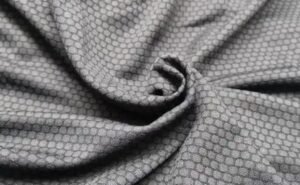African traditional culture has a very high charm in the world culture and art. African traditional clothing has been formed in a long historical period, with prominent personality and strong style.
What is African clothing?

African clothing, as its name implies, is the daily or traditional clothing of African people. The patterns and colors of African traditional costumes reflect the artistic outlook and national psychology of African people. In the long-term historical evolution process, African traditional costumes have formed a simple
The style features of rich color and simple personality have formed a unique style in the world.
African traditional clothing is characterized by rich colors and complex designs. The fabric used is usually hand woven and decorated with beads, shells and other decorations.
Most African cultures have a strong sense of identity and tradition, which is reflected in their clothing. For example, Maasai people in Kenya and Tanzania wear brightly colored clothes, which are handed down from generation to generation. In Ghana, men and women wear traditional Kent cloth on special occasions.
African traditional clothing is not only beautiful, but also practical. For example, many tribes use clothes to indicate marital status or age group. In some cultures, certain patterns or colors may be related to specific meanings (for example, red may represent courage).
Although the origin of traditional African costumes is unknown, it is clear that these costumes play an important role in the cultural heritage of the African continent.
Classification of African clothing
African costumes have always been quite distinctive, and the costumes of Africans are also very strange, which is difficult to measure by a unified standard. Most of these clothing designs are gorgeous in color, with strong pattern color contrast. Generally, they have a strong sense of design and a habit of symmetry.
1. Climate characteristics and convenience determine clothing characteristics
African style robes are characterized by looseness and hypertrophy, sleeveless, collarless or short collar, simple style, adapt to hot climate, and wear cool and comfortable. Some are simplified as a piece of cloth, with the right arm and right shoulder exposed. The round neck is open to the chest, and the openings on both sides are from the shoulder to the knee. It is used as a clothing during the day and as a cover at night. In the desert, it is also a Hoodie when encountering wind and sand.
2. Clothing is also a symbol of identity
The robes of high-ranking and well-off families are exquisite in workmanship, texture and pattern. It takes half a month to a month for a luxurious robe to be sewn by a skilled tailor, which is like a work of art. In addition to the Arab countries in North Africa or the Muslim nations who adhere to the tradition of the Muslim, male government officials, civil servants and upper class people in the African continent generally wear suits, ties and shoes in official communication occasions, which is not different from the mainstream Western society. However, national clothing is still the first choice for ordinary Africans.
3. Men and women dress differently
Men basically wear pants, and only some teenagers wear shorts. According to their clothing, they can be divided into three types. One is those who often work and have something to do, who wear pants and T-shirts, shirts or other, and the other category is those who wear trousers and shirts. They walk leisurely on uneven streets. There are also people who wear suits and shoes worthy of the name, and generally choose them according to work needs and formal occasions.
African women’s clothing is much more complicated. As a saying that “Everyone loves beauty” and African women are no exception. African women don’t wear pants and usually only wear African style dresses. Poor people just wear a piece of cloth. This kind of dress usually has bare shoulders. The color of the cloth is mainly bright red, green, indigo and cyan. The middle-aged and old women are mostly wear white and black African clothes.
African women like dresses with bright colors, rough patterns and bold lines, which are elegant and eye-catching. In some places, the body covering covers the chest, waist and toes. Don’t look down on a piece of body wrap. It has become a unique art appreciation product with a variety of patterns under the ingenious sewing and cutting of African women.
The above is about the introduction of African traditional clothing. If you travel to Africa now, you can hardly see the old robes on the streets. Instead, jeans, shorts, suits and other clothing are replaced. Among them, on formal occasions, wearing a suit is the main choice of many Africans, which is not different from the clothing characteristics of other parts of the world.
Manufacturing technology of African clothing
The manufacturing technology of making African traditional clothing is mainly reflected in the fabric. The batik fabric making process of African clothing is very common. The production process is divided into three categories: first, indigo wax resist printing cloth. The overall design color of this type is mainly indigo, and then matched with the corresponding design color; The second is the real wax resist printing cloth. This product is mainly made by replacing indigo dye with naftor dye, reactive dye and vat dye, and combining with other different designs and colors. The wax pattern of the product is mainly color. The third is super wax pattern proof cloth, which is the most top-grade product in Europe at present. The wax pattern is mainly bubble wax pattern, and the new dyes and additives are used to make its color more bright and beautiful, and the requirements for pattern are more refined, which echoes the current green ring factoring concept.
Common fabrics for African clothing

According to the different types of fabric products, it can be roughly divided into embroidery fabric, batik fabric and jacquard fabric. The embroidered fabric has bright colors, various patterns and styles, and is full of three-dimensional feeling. It is most popular with local people. Batik fabric is soft and comfortable, cheap, and the choice of pattern is much richer than embroidery products. It is the favorite choice of the poor. Jacquard fabric is simple and elegant in color, fresh and simple. It is the best substitute for jeans and T-shirts in Africa.
Due to the hot and dry weather, Africans also have many choices in clothing fabrics, which can be divided into cotton polyester and polyester cotton. Cotton is the lightest, sweat-absorbing and breathable; Polyester is cheap and firm. And polyester cotton mixed the material is between the two, which is relatively moderate. Among them, polyester and polyester cotton mixed fabrics are only used in embroidery products.Other textile fabrics are mainly cotton.
In terms of color, the aesthetic differences between young people and middle-aged and old people are similar to those in China. Young people like to be bright and eye-catching color, such as bright yellow, makes people feel energetic at a glance. Middle aged and old people, especially middle-aged women who love dark coffee, earthy yellow, beige, wine red and other mature colors which have a unique flavor of a mature woman.
Maintenance of African clothing
African clothing with batik fabrics can be washed with water at any time, but can’t use detergent during washing to avoid color loss. Machine wash is also not available. Because many dyeing paintings mainly highlight the main effect of the fringes, machine washing will damage the fringes. The batik products can be ironed after washing.
As the raw material of batik is pure cotton cloth, attention should be paid to moisture and corrosion prevention in maintenance to avoid mildew and insects. If it is used for collection rather than decoration after purchase, it should be taken out and dried regularly to prevent exposure to the sun.
Embroidered and jacquard fabrics are woven from protein delicate health fiber. Therefore, the maintenance is similar to that of silk fabrics. They should be protected from light, air and sun. When washing, it is not suitable to rub with coarse clothes, and it is not allowed to wash with a washing machine. The correct way is to immerse the clothes of this kind of fabric in water for 5-10 minutes, then use special detergent or neutral soap to gently rub, and then rinse with water repeatedly.
Price of customized African clothing
The price of batik clothing is generally 5~15 dollars per yard. The finished products of wholesales batik clothing sell for about US $10~65. The price of these African clothes depends largely on the batik process and quality. Batik with better quality will have more bright colors, fine texture and few drawing. The procedure is more complicated and the process technology is more difficult. Most of the batik fabrics over 15 US dollars per yard are made of imported batik fabrics, with special patterns and higher color requirements.
Market analysis of African clothing
In the African clothing market, South Africa ranks first in terms of market size, and China is its main import source. South Africa is a potential and multi-level consumer market, with demand for high, medium and low-grade textile and clothing products, and the product grades are mainly medium and low-grade.
1. The purchasing power of Africans has increased
The British economist once pointed out that the rapid population growth in Africa will promote the development of urbanization. In 2010, there were only three cities in Africa with a population of more than 5 million, namely Cairo in Egypt, Lagos in Nigeria and Kinshasa in the Democratic Republic of the Congo. However, by 2050, there will be 35 cities with a population of more than 5 million, of which Kinshasa and Lagos are expected to have a population of more than 30 million. Driven by this accelerated urbanization process, African consumers have increased their purchasing power and become more sensitive to fashion.
2. Young people become the main force of consumption
The younger generation of consumers will become the backbone of the African market. At present, the income of consumers aged 16 to 34 accounts for 53% of the total income of African residents. The consumption habits of this generation of consumers are obviously different from those of the older generation. They are more educated. Therefore, they are more used to looking for consumption information from the Internet, more concerned about fashion and fashion trends, and willing to try new things.
3. Used or new?
East Africa is one of the African subregions that boycotted the import of second-hand clothing for the earliest and longest time. For example, Kenya, Tanzania, Uganda and other East African countries have issued relevant policies to boycott the import of second-hand clothing. Although this has stimulated the development of underground industrial chains such as second-hand clothing smuggling, it has also greatly promoted the import of new African clothing, including jeans such as milk pants. In general, Africa’s dependence on second-hand clothing will continue to weaken, and the local production and import of new products will continue to increase.
4. E-commerce is a good channel to tap the African market
The CEO of Mr price, a large clothing and household goods retail group in South Africa, once said that the launch of e-commerce would make the group’s business extend to foreign markets, especially in those markets with narrow space and high rent, e-commerce would be a good choice, especially in the African market. The development of the real estate industry in Africa is relatively slow, and it is relatively difficult to lease stores. CFO said that conducting business through e-commerce can avoid a large amount of investment in the early stage and explore the trend of new markets, which can be said to kill two birds with one stone. Meanwhile, Mr Price said that at present, the company’s international orders are almost from South Africa, and customers can pay through the payment platform PAYPAL or credit card.







